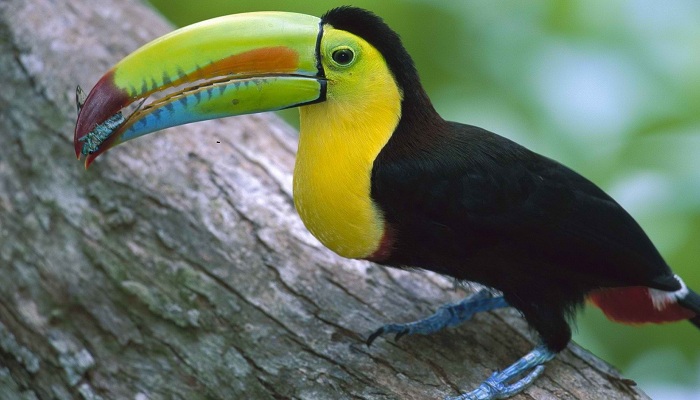A research team led by the University of Sheffield (UK) called for citizen collaboration to measure the shapes of the peaks of more than 2,000 bird species that had previously been scanned in 3D, from specimens collected at the History Museum Natural and Museum of Manchester. This was the beginning of a scientific project, published this week in the journal Nature, called ‘Mark My Bird’.
The work analyzes the diversity of peaks on a global scale, with three-dimensional images representing more than 95% of live bird species.

Scientists know that natural selection drives the diversification of small groups of organisms that exploit ecological niches – the places within the community – available in their environment. The evolution is fast at first and then its speed is reduced as the niches fill up.
However, as this deceleration effect has not been observed in large taxonomic groups, it was unclear how some traits of great ecological importance, such as bird beaks, are diversified.

Using data obtained from citizen collaboration, the team has deduced that the diversity in the form of the peaks grew rapidly and very soon in its evolutionary history. Over time, it slowed down, while the rate of evolution continued to vary among individual lineages. The most unusual forms appear after periods of very rapid evolutionary change.
“We observed that the shape of the beak of the birds evolved to be extremely diverse at an early stage. This could be produced after the extinction of the dinosaurs, which would provide them with an ecological opportunity for evolution. Later, as that advantage became more restricted, the changes became more subtle by having smaller and smaller niches, which led to a slowing rate of evolution, “explains Sinc Gavin Thomas, lead author of the study.
Bird beaks are a highly adaptable tool and their shape is a good indicator of how a species uses its environment.
But there are exceptions. Birds that have evolved in isolation on remote islands, such as the Galapagos or those in the Hawaiian archipelago, have continued to evolve rapidly.

Thomas adds: “Bird beaks are a very adaptable tool and their shape is a good indicator of how a species uses its environment – what it eats and how it forages. Peaks can give us a lot of information about the ecological niche of a species. ”
The authors state that this study supports the concept of mega evolution, in which the initial diversification of a trait is adjusted as organisms expand around the world and find new opportunities from unpredictable circumstances.
“The project has given us a key insight into how evolutionary processes evolve over millions of years, with big bursts of evolution as new groups emerge,” argues Thomas.

Taking measures of these animals around the world would have been very difficult, according to those responsible for this project. From 3D models taken from specimens collected in museums of natural history made possible a detailed study.
The volunteers who wanted to collaborate with the work accessed through a website that allowed them to access 3D models of the peaks and create these new resources on their forms. “With its effort, we have a new set of data for the study of the ecology and evolution of birds,” emphasizes the scientist. The researchers hope to discover more details of the evolution of the peaks through this mapping system.
You may also like to read about strix mythology.
